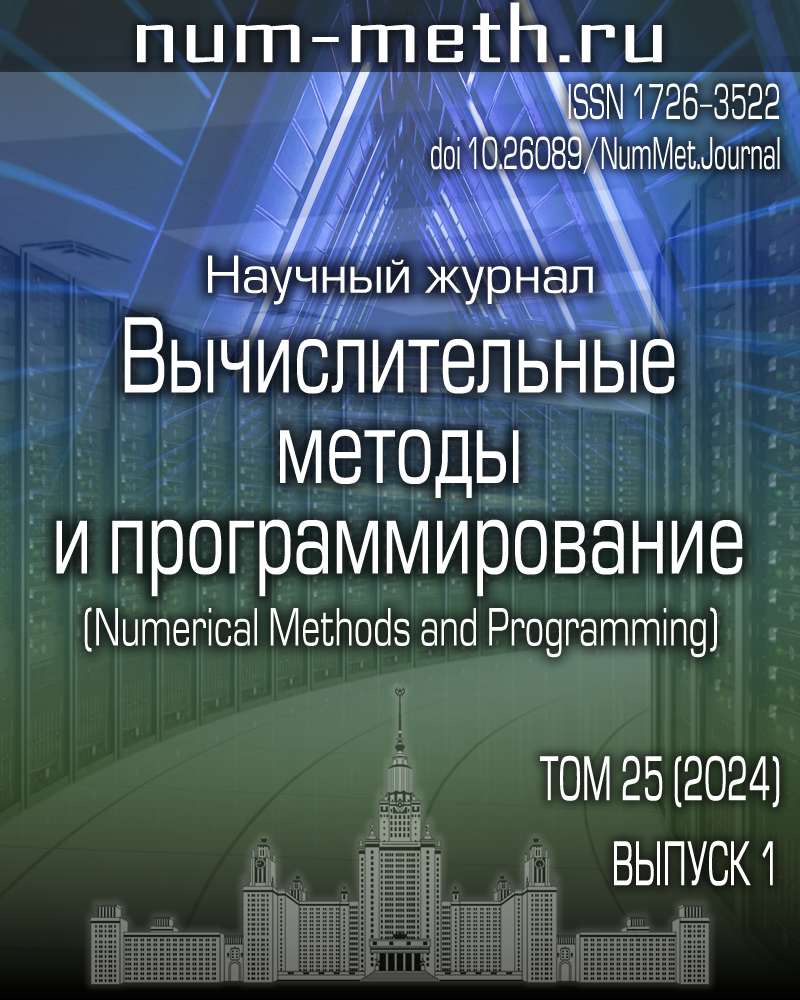|
|
Numerical methods and programming, 2016, Volume 17, Issue 1, Pages 55–64
(Mi vmp815)
|
 |
|
 |
Application of multiGPU+CPU architecture for the direct numerical simulation of laminar-turbulent transition
N. M. Evstigneev, O. I. Ryabkov
Institute for Systems Analysis of Russian Academy of Sciences
Abstract:
The use of various parallel computational architectures for the direct numerical simulation (DNS) of laminar-turbulent transition problems (LTTPs) is summarized. Usually, DNS results are analyzed on the basis of a set of statistical parameters: pulsation velocities correlations, energy spectra, etc. When a dynamical system analysis approach is applied to DNS results, it is necessary to evaluate additional parameters: eigenvalues of Jacobi matrices, phase space attractors, and eigenvalues of monodromy matrices, etc. This allows one to present results as bifurcation scenarios and diagrams and bring up more details concerning LTTP scenario as functions of bifurcation parameters (e.g., Reynolds, Mach, and Froude numbers). This problem is computationally expensive and algorithms are complex. This brings up more demands on the hardware efficiency and software algorithm optimization. We are using GPU and multiGPU together with CPU architectures since 2008 for this kind of DNS. We considered eight different LTTPs since then. Various high-order methods were applied. In this paper we show typical computational operations for each class of problem. We illustrate the application of libraries and algorithms, perform efficiency benchmarking across GPUs and with CPU versions. It is shown that in general one GPU is 5 to 35 times faster than CPU. The acceleration is worse than linear and is proportional to a power function with an exponent between 0.78 and 0.81. We use five GPUs for multiGPU and show CPU+multiGPU efficiency for one of the problems under consideration.
Keywords:
multiGPU, multiGPU, hybrid GPU and CPU architecture, direct numerical simulation, laminar-turbulent transition, dynamical systems, high order numerical methods.
Received: 05.02.2016
Citation:
N. M. Evstigneev, O. I. Ryabkov, “Application of multiGPU+CPU architecture for the direct numerical simulation of laminar-turbulent transition”, Num. Meth. Prog., 17:1 (2016), 55–64
Linking options:
https://www.mathnet.ru/eng/vmp815 https://www.mathnet.ru/eng/vmp/v17/i1/p55
|

| Statistics & downloads: |
| Abstract page: | 164 | | Full-text PDF : | 88 | | References: | 1 |
|




 Contact us:
Contact us: Terms of Use
Terms of Use
 Registration to the website
Registration to the website Logotypes
Logotypes








 Citation in format
Citation in format 